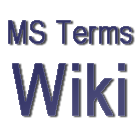McLafferty rearrangement: Difference between revisions
(→External links: Orange Book cat case using AWB) |
|||
| Line 10: | Line 10: | ||
== Gold Book entry == | == Gold Book entry == | ||
{{gold| | {{gold| | ||
http://goldbook.iupac.org/M03772.html | |||
β-Cleavage with concomitant specific transfer of a γ-hydrogen atom in a six-membered transition state in mono-unsaturated systems, irrespective of whether the rearrangement is formulated by a radical or an ionic mechanism, and irrespective of the position of the charge. | β-Cleavage with concomitant specific transfer of a γ-hydrogen atom in a six-membered transition state in mono-unsaturated systems, irrespective of whether the rearrangement is formulated by a radical or an ionic mechanism, and irrespective of the position of the charge. | ||
'''Source''': | |||
[[Orange Book]] p. 207 | |||
}} | }} | ||
Revision as of 20:55, 17 July 2009
Obsolete Template
Orange Book entry
Orange Book
| ORANGE BOOK DEFINITION
IUPAC. Analytical Division. Compendium of Analytical Nomenclature (the Orange Book). Definitive Rules, 1979 (see also Orange Book 2023) |
| McLafferty rearrangement |
|---|
|
This is an example of a rearrangement reaction and is defined as β - cleavage with concomitant specific transfer of a γ - hydrogen atom in a six-membered transition state in mono-unsaturated systems, irrespective of whether the rearrangement is formulated by a radical or by an ionic mechanism and irrespective of with which fragment the charge stays. |
| IUPAC 1997 Orange Book Chapter 12 |
| Index of Orange Book Terms |
Gold Book entry
Gold Book
| GOLD BOOK DEFINITION
IUPAC. Compendium of Chemical Terminology, 2nd ed. (the Gold Book). Compiled by A. D. McNaught and A.Wilkinson. Blackwell Scientific Publications, Oxford (1997). |
| McLafferty rearrangement |
|---|
|
http://goldbook.iupac.org/M03772.html β-Cleavage with concomitant specific transfer of a γ-hydrogen atom in a six-membered transition state in mono-unsaturated systems, irrespective of whether the rearrangement is formulated by a radical or an ionic mechanism, and irrespective of the position of the charge. Source: Orange Book p. 207 |
| IUPAC Gold Book |
| Index of Gold Book Terms |
